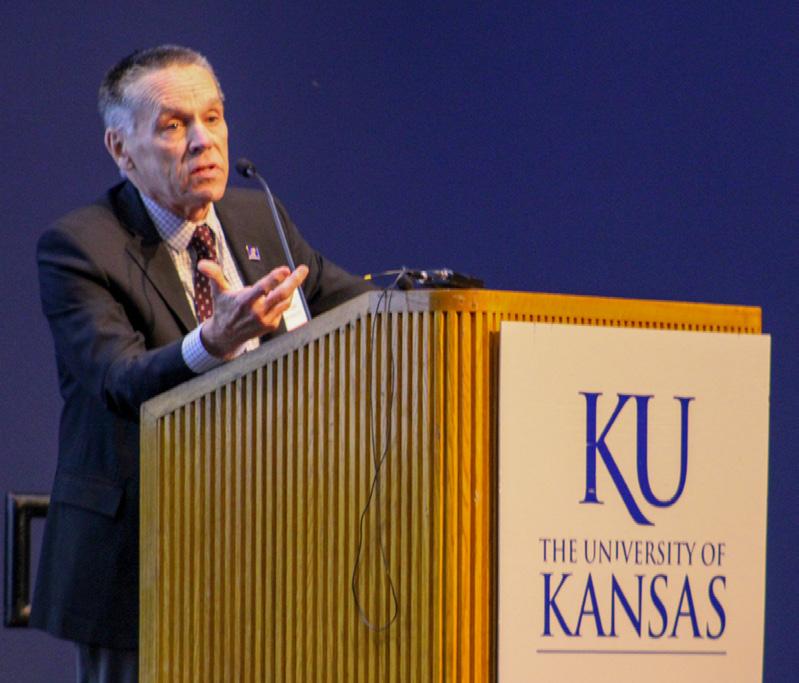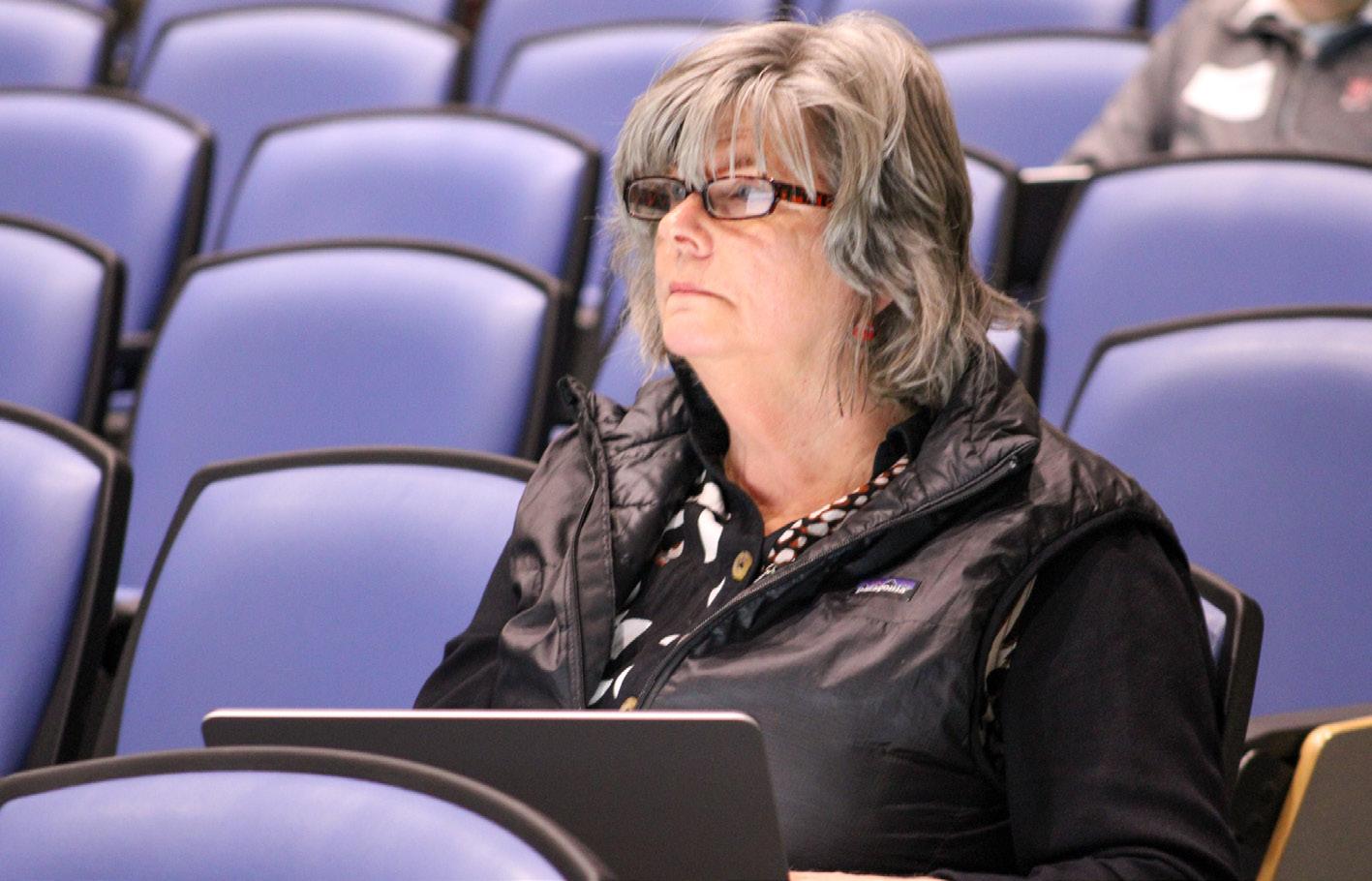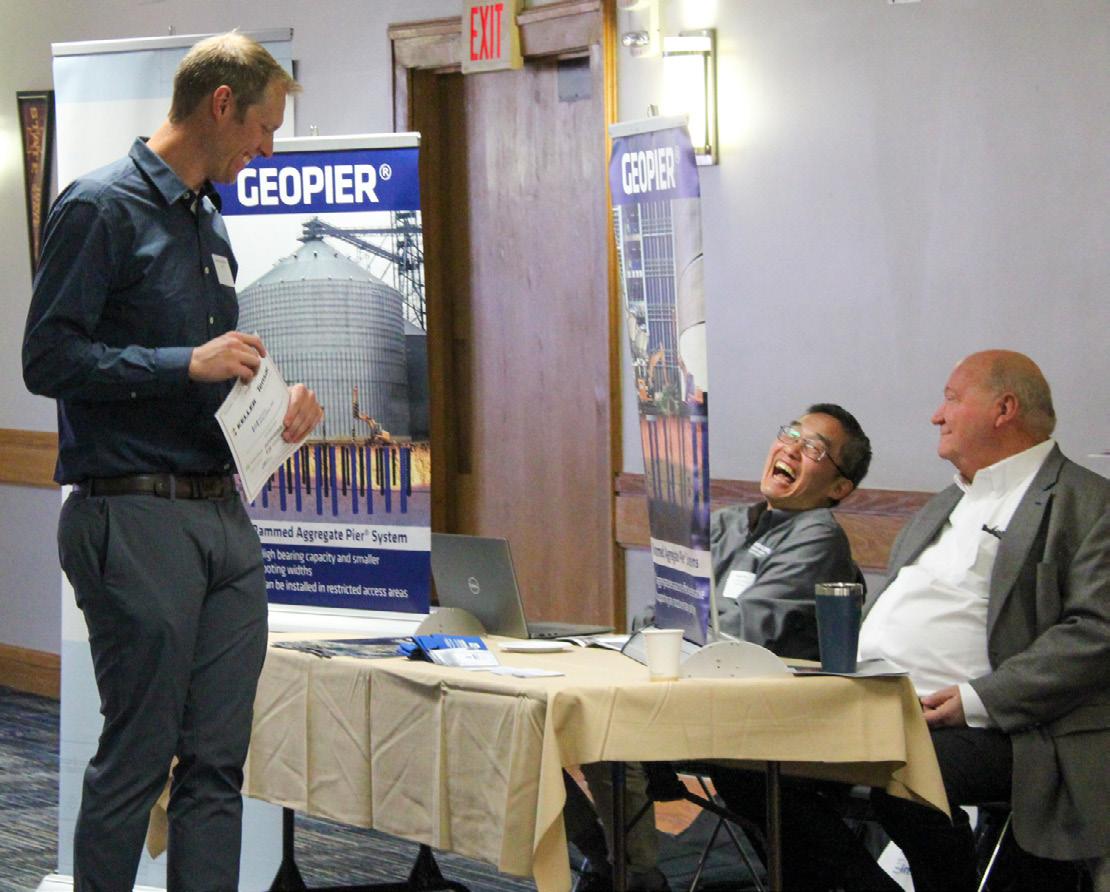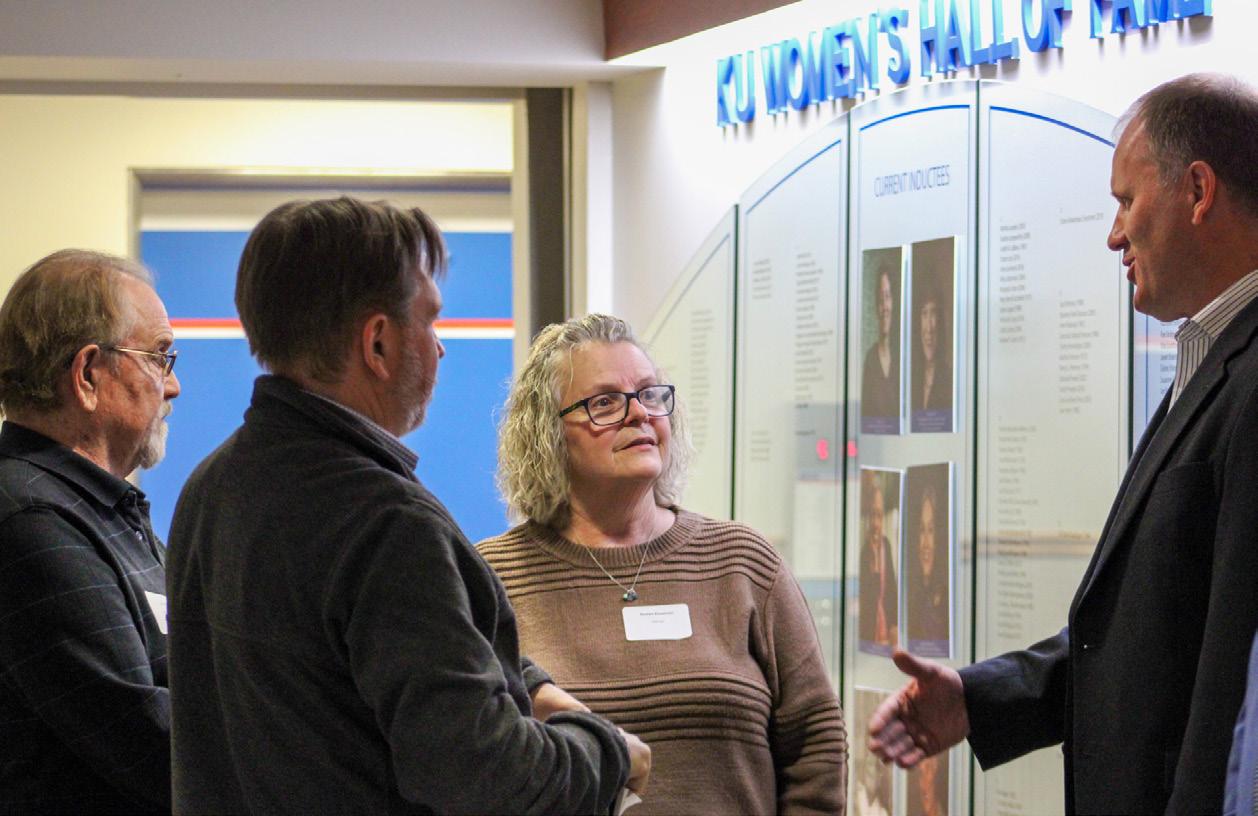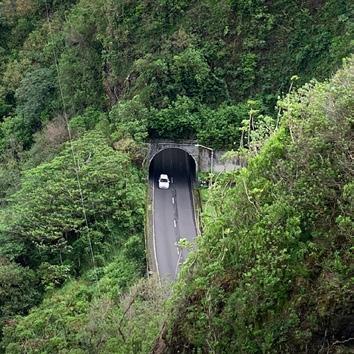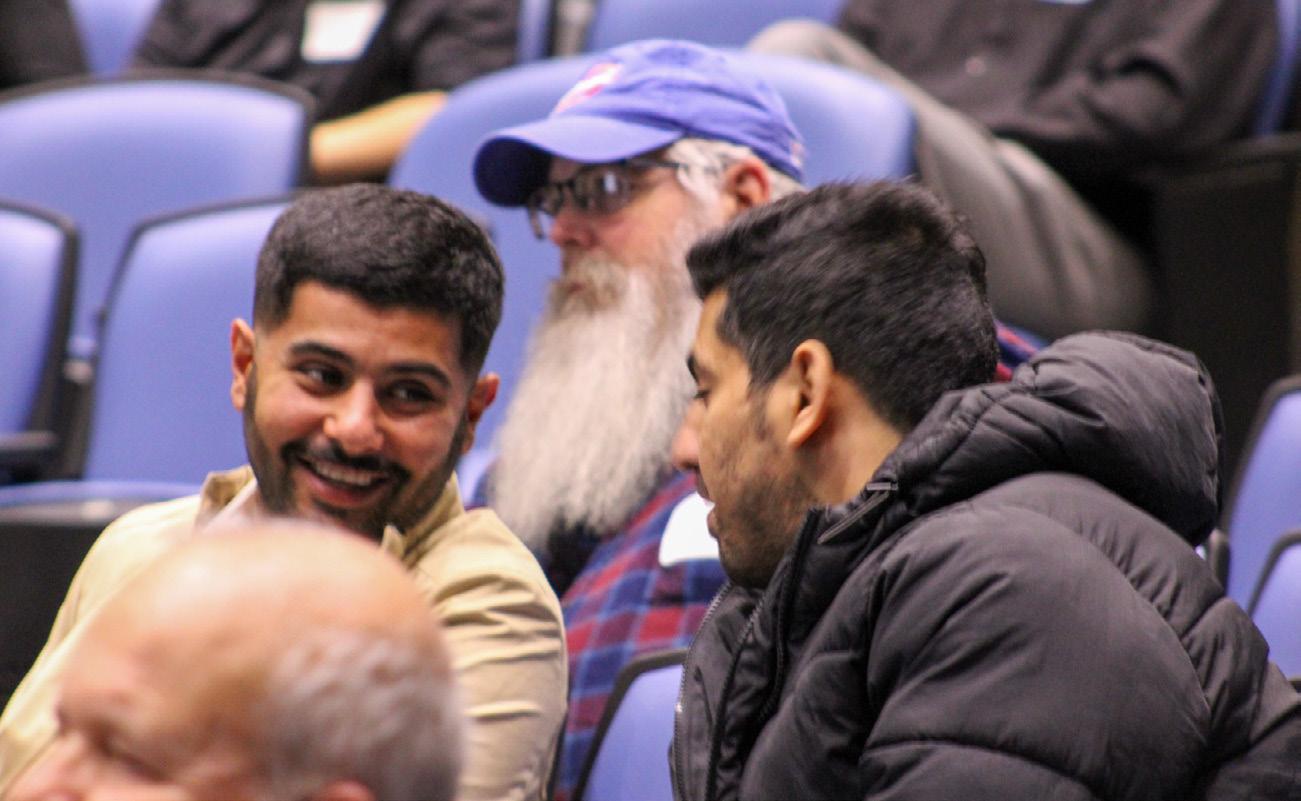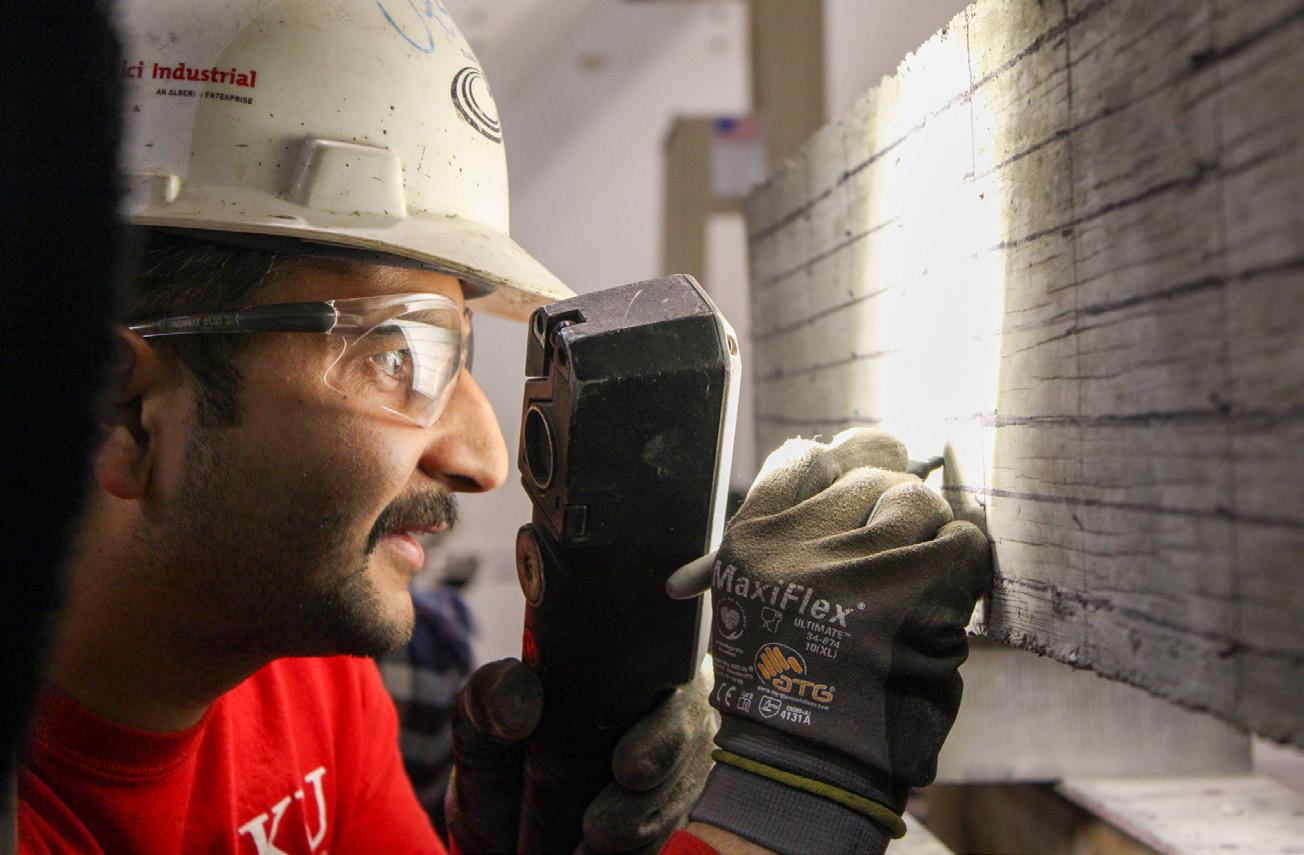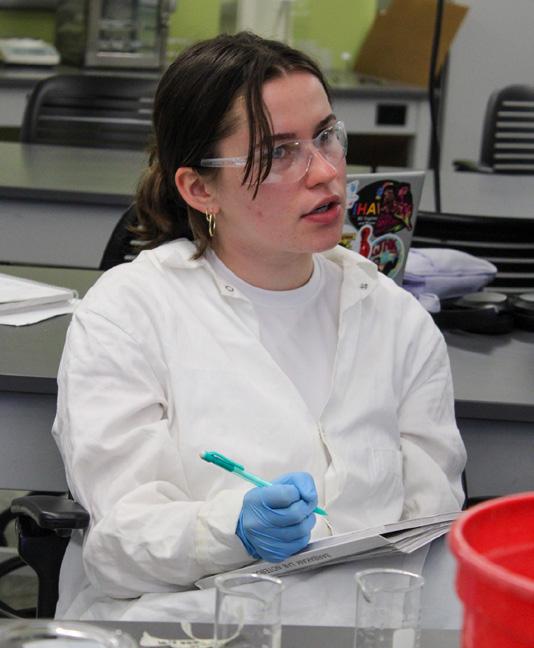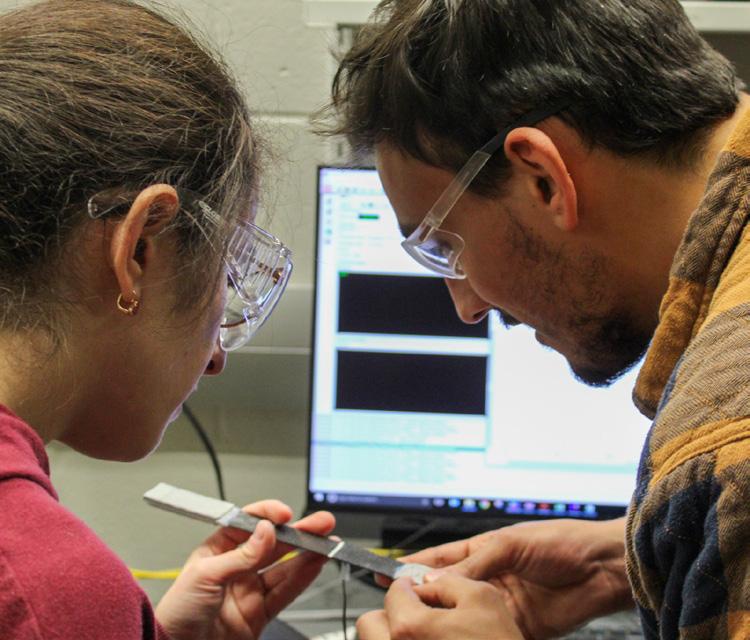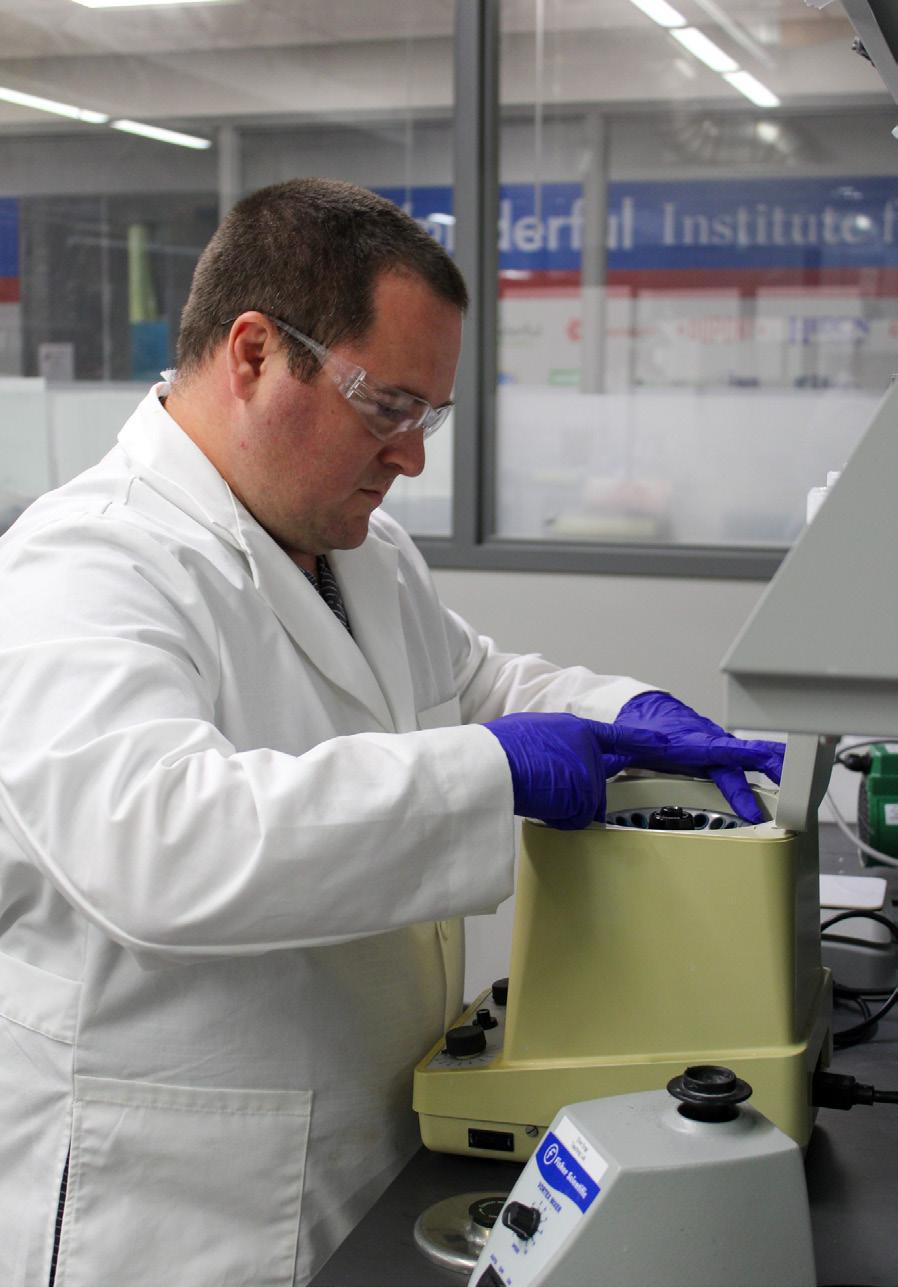CEAE Update













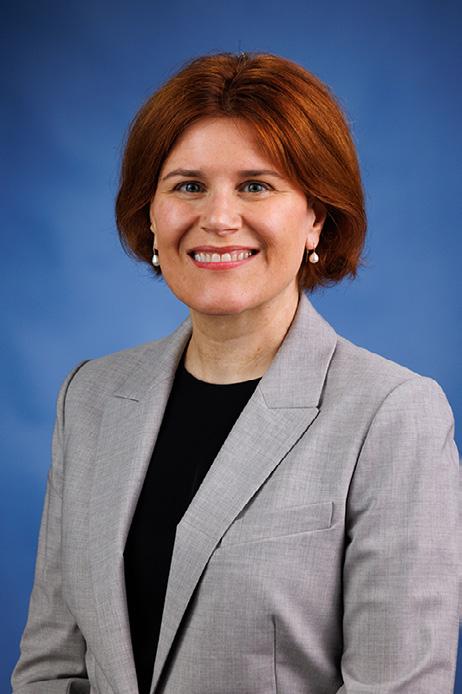
Dear Friends,
Welcome to another edition of the CEAE Update! It has been a whirlwind of a year since I took over as Chair from Dave Darwin, but I am excited and honored to step into the role, especially following his leadership.
We have had much to celebrate since the last CEAE Update. Our faculty continues to do great work in the support of our students, our department and the broader global community. Belinda Sturm served as our interim vice chancellor for research and was elected to serve on the Board of Directors for the Association of Environmental Engineering and Science Professors. Distinguished Professor Jie Han served as president of the American Society of Civil Engineers (ASCE) Geo-Institute in 2024. Additionally, Rémy Lequesne traveled to Türkiye to survey the damage after earthquakes rocked south-central Türkiye and Syria. You’ll find more about these and other highlights in this edition of the Update.
In our Alumni Feature, Josh Crain, E’08, G’10, shares insights about his role as a senior structural engineer at Genesis Structures. His behind-the-scenes work on complex bridge projects has advanced demolition safety standards. Josh has managed notable projects like the rapid replacement of the Burlington River Bridge and the challenging renovation of the Merchants Bridge in St. Louis.
Of course, we couldn’t let Dave step down as chair without celebrating his tenure with our department. As of July 2024, Dave has served 50 years within the Civil, Environmental & Architectural Engineering Department. Starting with his time serving in the Army, Dave has touched the lives of countless engineering students and current engineers - and he’s still going strong.
Finally, recent graduate Lindsay Withers, E’23, shares her experiences within our department and her future ambitions. She received the Sammie and Carle Locke Award for Outstanding Seniors at the University of Kansas due to her dedication to engineering. Now, she’s pursuing a new path, completing prerequisites for veterinary school while gaining hands-on experience at a local clinic, combining her engineering problem-solving skills with a passion for veterinary science.
To all our alumni and friends, I want to thank you for your continued support of the CEAE Department. I have seen how your contributions have supported our students, faculty and staff, and I look forward to continuing to see the growth of this department. I am proud of the work we have done and look forward to a strong future.
Rock Chalk, Caroline R. Bennett

Charles E. & Mary Jane Spahr Professor
Glenn
L. Parker
Faculty Fellow Department Chair


Ronda Morgison
Melinda R. Cordell Emma Herrman Reta Solwa
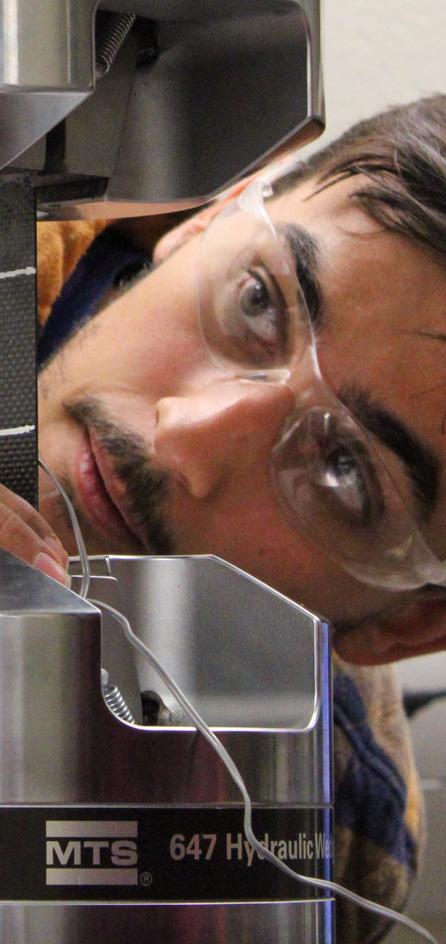



Top left: Josie Taylor examines dirty water undergoing coagulationflocculation. Top right: Dave Darwin testing a specimen in the lab a few years ago. Middle: the 2023 KU Concrete Canoe Team;. Bottom left: Caroline Bennett and William Collins receive an award; Bottom right: The LEEP Building

Belinda Sturm was recently elected to serve on the Board of Directors for the Association of Environmental Engineering and Science Professors.
William Collins spent the spring 2024 semester in Finland as a Fulbright U.S. Scholar.
Caroline Bennett, Rémy Lequesne and Jian Li had a featured article in DHS Science and Technology.
Justin Hutchison received a prestigious national award granted to early-career faculty whose research shows promise. The award is a five-year, $560,000 grant from the National Science Foundation for his research into microbes that can break up chemicals in soil and ground water.
Amy Hansen also received an award from the National Science Foundation. Her proposal is titled, “CAREER: Nitrogen Exchange and Removal in Riparian Wetlands - the Role of Vegetation.”
Caroline Bennett was awarded the Henry E. Gould Award for undergraduate engineering mentoring by Engineering students.

Rémy Lequesne has been elected as a Fellow of the American Concrete Institute.
Justin Hutchison received the Miller Professional Award for Research at the School of Engineering recognition ceremony in May 2024 for excellence in research and scholarship.
Amy Hansen and Justin Hutchison were honored with five years of service, Andres Lepage, Rémy Lequesne, Jian Li and Dan Tran were honored with 10 years of service, and Robert Parsons was honored with 25 years of service to the University of Kansas. Dave Darwin was honored with 50 years of service to KU.
Jie Han was selected to be President of the GeoInsitute for 2023-2024.
William Collins was named a Chesterfield Education Foundation Bravo! Award winner. This award celebrates achievements by alumni of Chesterfield County Public Schools in Virginia.
Belinda Sturm served as Interim Vice Chancellor for Research for KU in 2024. She previously served as Associate Vice Chancellor for Research.
Dave Darwin stepped down as Department Chair on June 30, 2023. Caroline Bennett was named as his replacement and began her term July 1, 2023.
CEAE added four new faculty members for the fall 2024 semester: Xu Han, Huijeong Kim, Kazi Parvez Fattah and Nishit Shetty
Kent Dye, Carey Meyer and David Woody received the Benjes Family Staff Achievement Award.
Ray Carter, Ronda Morgison, Waqas Rana and Reta Solwa received the Robert L. Skaggs Staff Achievement Award.
Ronda Morgison received the School of Engineering Staff Recognition Award.
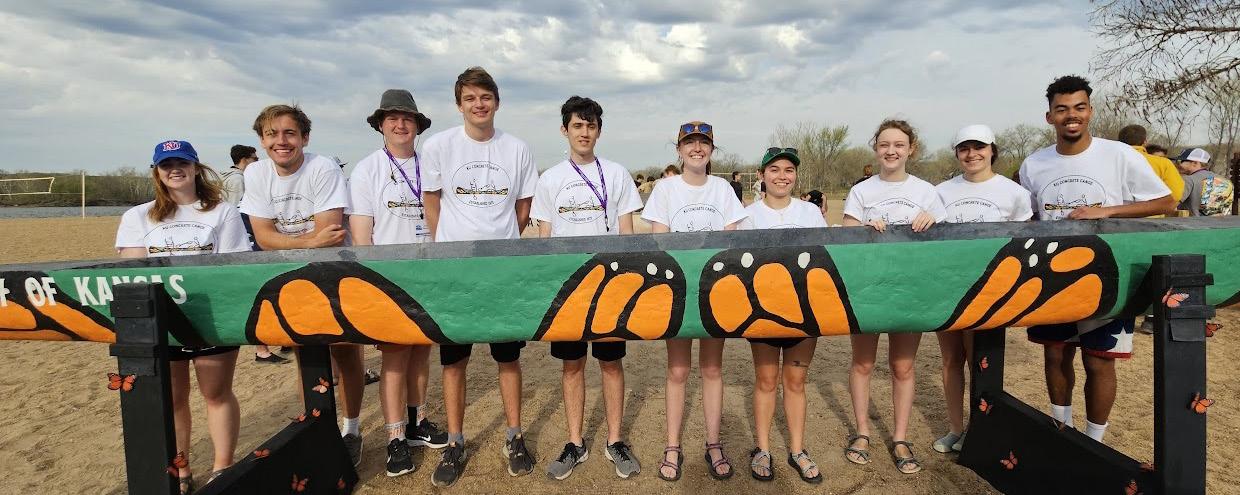
Kent Dye and David Woody were honored with 10 years of service. Ronda Morgison was honored with 25 years of service.
Reta Solwa retired after 30 years at KU. She spent 20 years with the CEAE department.
Emma Herrman, outreach & communications coordinator, joined the CEAE Department in August 2024.
Darlene Lantz, office manager, joined the CEAE Department in September 2024.
The KU Concrete Canoe Team competed at Kansas State University during the 2023 spring semester. The team took away several awards including first place in Concrete Canoe Prototype Design. The 2024 team competed at Missouri S&T and also took home several awards.
Emma Forthaus, Noel Lange and Avery Mohn were awarded a Robert L. and Lucille J. Smith Scholarship for the 2023-2024 academic year.
Jaswant Cobos was awarded a 2023-2024 KU International Student Grant.
Afeez Badmus was recently selected as a Bill Anderson Fund Fellow.


Jordan Nutter was the recipient of the inaugural Stanley T. Rolfe, Ph.D., Graduate Scholarship in 2024.
Md Wasif Zaman and Yuqiu Ye presented the Kansas City Geo-Institute (KCGI) Scholarship at the 55th Annual Geotechnical Engineering Conference held at the Kansas Union on November 10, 2023.
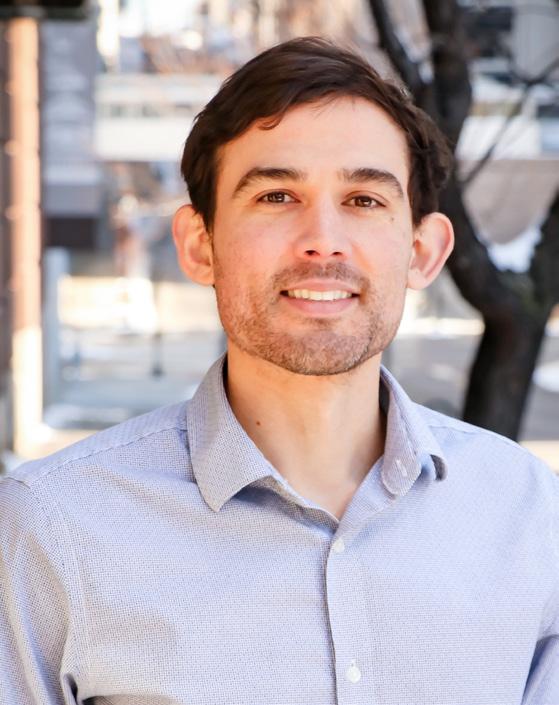
By Melinda R. Cordell
Photos provided by Josh
eople who are even a little familiar with bridge engineering aren’t necessarily aware of what we’re doing behind the scenes,” said Josh Crain.
Crain is an associate senior structural engineer at Genesis Structures, a structural engineering consulting firm specializing in bridge and architectural erection engineering and structural design. For the last 13 years, Crain has been doing that behind-the-scenes work in on-site bridge engineering, which includes moving gigantic bridge spans upriver with tugboats, executing time-sensitive projects that must be completed within a very narrow window of time and orchestrating demolition with precision. The behind-the-scenes work is where innovation and craftsmanship meet.
Crain developed his interest in engineering from the family business. His dad and brother ran a business that did light construction when he was growing up. In high school, due to his familiarity with the family trade, Crain naturally gravitated toward engineering. Construction engineering and civil engineering, specifically structures, drew him in.
When he started at the University of Kansas, he took the freshman course called “Intro to Civil Engineering,” an overview of the different areas of civil engineering. Meeting engineering professionals from different disciplines reinforced his interest in
Crain
working with structures.
During his undergraduate years, while leading the Steel Bridge Team at KU, he struck up a good relationship with steel bridge faculty advisor Caroline Bennett. She gave him the opportunity to go to graduate school, where Crain worked with her on bridge-focused research.
Bennett was one of his mentors, along with Dr. Stan Rolfe, who died in 2023.
“Both Dr. Bennett and Dr. Rolfe helped guide me in my undergrad years and encouraged me to go to graduate school, which is the big reason why I’m at a firm like Genesis,” Crain said. “The extra courses I took during graduate school were very beneficial for me early in my career, so I definitely credit them with steering me in the right direction.”
While earning his bachelor’s and master’s in civil engineering from KU, Crain put in time in internships, research, and teaching assistantships. After graduating, he joined Genesis Structures as a structural engineer for temporary works projects. Currently, his biggest mentors at this point are the two principals at Genesis, Dave Byers and Dave Rogowski. “They’re both really good at what they do, good leaders, technically sound and great at relating to clients. They’ve molded me to where I am now.”
Bridges are incredibly immense and complex structures, not only in the design but also in the extensive logistics necessary to get them safely built or erected. “We deal with projects that require specialty engineering to ensure safety during construction,” explained Crain. “We are talking about bridges that weigh in the millions of pounds, so we are working on a tremendous scale.”
One of Crain’s earliest jobs was replacing seven 300-foot BNSF approach truss spans over the Mississippi River at Burlington, Iowa.
Having a bridge closed costs railroads so much money that paying for substantial temporary works engineering is actually more economical.
“Some of our change-outs consist of ‘Get the old bridge out, do what we need to do to the piers, put the new bridge in,’ so it happens very fast,” Crain said.
As a result, the Burlington bridge project involved several 36-hours closures – and two of the new 300-foot spans had to be completely installed within that space of time.
Naturally, extensive planning must take place well beforehand for projects of this scope. “The bridge is often in its most vulnerable state as it’s being built or removed, so we do a lot of modeling and a lot of studying to make sure that the structure is going to be able to be put together safely.” Logistics and extensive planning would also be covered in this time.
“For Burlington, we built the new bridges in their entirety on a barge and brought each truss to
where it’s going to be in its final resting place,” Crain said.
So when it came time for a new section to be brought in, they closed the track for 36 hours and got to work.
“It’s exciting when it happens and when it goes well,” Crain said, “because there’s so much time and energy put into it.”
More recently, Crain was part of a team that rapid-assembled the Merchants Bridge in St. Louis, a 45-month railroad project.
Crain was particularly proud of this project. “As I’m advancing in my career, I’m getting a longer and longer leash as it comes to responsibility. That was one of the first projects where I really got to take the ball and run with it, which made it more exciting.”
The three Merchants trusses, each 550 feet tall and weighing 9 million pounds, would be tricky to change out on any body of water, but the whole operation was made even more complex by the Mississippi River’s rushing water.
For the Merchants project, each truss was completely pre-assembled off alignment on barges, then tugboats would push the barge to the work area. Once there, the tugboats would maneuver it into place, then hold it steady against the current. The truss would be picked up with strand jacks supported on an overhead gantry beam that lift it up off the barge. The bridge sections were raised and set onto sleds on a temporary frame. Then the sections were
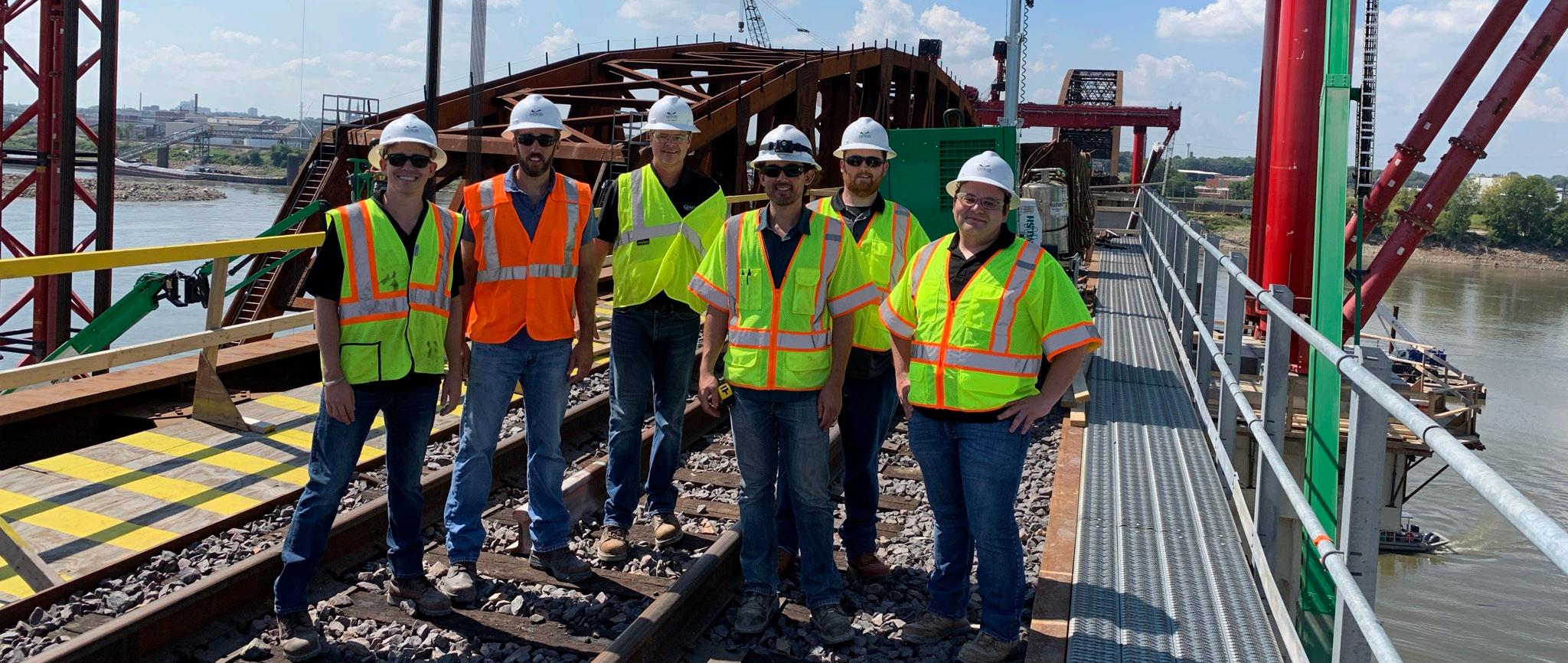
slid onto the permanent supports.
“The river’s not exactly the best place to push a bridge on a barge,” Crain said. “This part of the Mississippi had really high stream flow, so we had to provide about 14,000 horsepower of tugboats just to keep the structure from going downstream.”
Lately, Crain has been focusing more on safety in demolition. The Bridge Demolition Subcommittee within the ASCE Construction Institute Temporary Works Committee, of which Crain is a member, has completed its final draft on a first-of-its-kind best-practices document for demolition engineering. The Bridge Demolition Best Practice document was recently under review from ASCE Publishing and is now available. Crain said that additional guidance and minimum standards are needed for maintaining a safe structure as a bridge is being demolished.
At Genesis, Crain’s team analyzes structures of all kinds being dismantled, including those that are removed with explosives. Contractors strategically weaken the structure by making the pre-cuts (which allow the bridge to break at specific points) and put explosives charges at the cut locations called shape charges. Explosives are a quick and sometimes safer way to take down a bridge.
“The alternative to explosives is not quite as exciting,” Crain said. “It’s just putting equipment on top of the bridge, knocking the deck out, and pulling out the steel beams with the crane or equipment on the ground – basically building a bridge in reverse.”
Regardless of how bridges are taken down, demolition plans require careful planning and execution to ensure the work is done safely.
Crain enjoys working on any project that brings new challenges. Recently he’s been working on the erection of several long-span arch bridges.
“Those are fun just because they’re a geometric challenge,” he said. “They’re not easy to build, so there’s a lot for us to do, but they result in beautiful structures. I would say that some of these arches are my favorite projects – but they’re not done
yet, so I don’t want to jinx them!”
He recently taught a course at the KU Edwards campus this fall on the design of temporary works.
The best part of Crain’s work is looking at his finished projects.
“It’s sometimes stressful,” he admitted, “but it’s also satisfying to get that gratification of being able to see that what you engineer actually works. You’re designing for real loads, and you get to see the results immediately. Being able to see your work in person is really satisfying.”
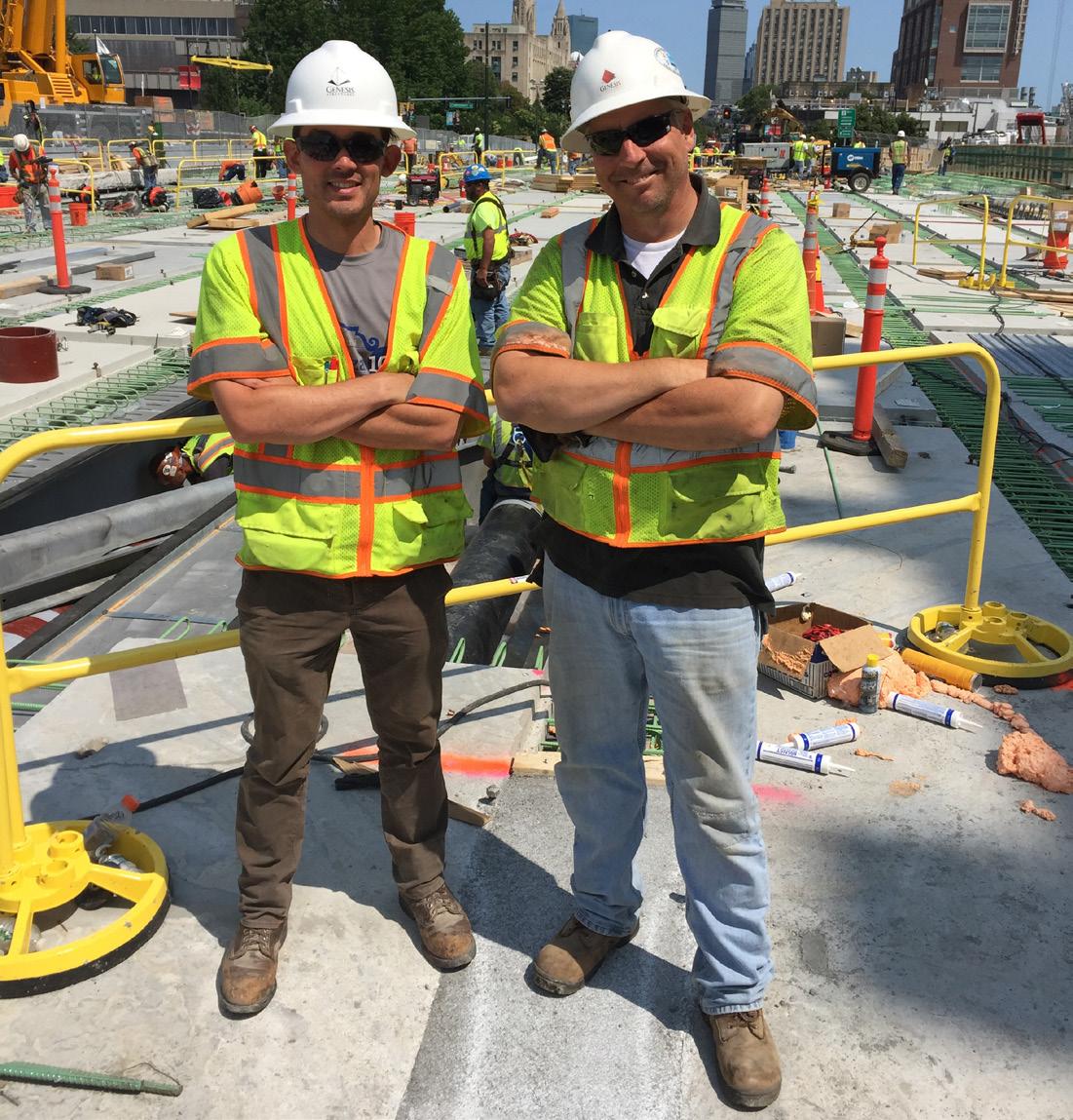



Paratrooper, professor, concrete canoe guru and teacher, Dave Darwin has had a busy 50 years at KU - and he’s still going strong
By Melinda R. Cordell
David Darwin has enjoyed a particularly fruitful tenure in his 50 years at the University of Kansas. He hit his KU golden anniversary in July 2024 and recently stepped down as chair of the CEAE Department.
A former president of the American Concrete Institute and now former chair of the CEAE Department, Darwin is returning to teaching courses in structural engineering materials, reinforced concrete and prestressed concrete. The research he’s best known for is in evaluating corrosion protection systems for reinforcing steel, the bond strength between steel and concrete and the reduction of cracking in concrete structures.
But one of his proudest accomplishments is serving as advisor for the KU concrete canoe program from 1975 to 2006.
“Google ‘concrete canoeing,’” he urged. “I brought the concrete canoe competition to KU in the spring of ‘75. It’s now a national event.”
So where did such a long and storied career begin?
Darwin’s academic career included help from the Army. He earned one of the very first scholarships offered by the Army ROTC, which helped pay for his education at Cornell University. In 1967 he graduated at the top of his class with a bachelor’s in civil engineering. He went on active duty right away, but, because he ranked at the top
of his class, the Army permitted him to pursue his master’s degree, just as it did for the top 5% of West Point graduates. The National Science Foundation paid his tuition, the Army paid his salary and he earned a master’s in structural engineering in 14 months.
Then he went on “real” active duty for the next four years. After rigorous training in the elite Airborne and Ranger schools, he joined the 82nd Airborne in 1969 and shipped off for Vietnam in January 1970.
“In Vietnam, I was with three different battalions, but they all were all involved in construction,” Darwin said. “Other than being in a kind of dangerous area and being away from my family, it was a very positive experience.”
He returned home on Christmas Day 1970. His new assignment: to take the Engineer Officer Advanced Course at the Army Engineer School at Fort Belvoir, Virginia. Darwin had misgivings, because taking this course would lock him into an additional two-year commitment in the Army. He showed up, only to find that his session of the course had been canceled. “Can I go someplace else?” he asked, but the Army said, “No, you’re already signed in, we paid for your travel, you can’t move!” So Darwin went looking for a job on post.
Fortunately, one of his battalion commanders from Vietnam, Col. Donald Ramsey, was the head of the Construction Engineering Division of the school and immediately assigned him to teach in the Concrete Subsection of the Pavement and Materials Section. “Hey, concrete was what I did my master’s
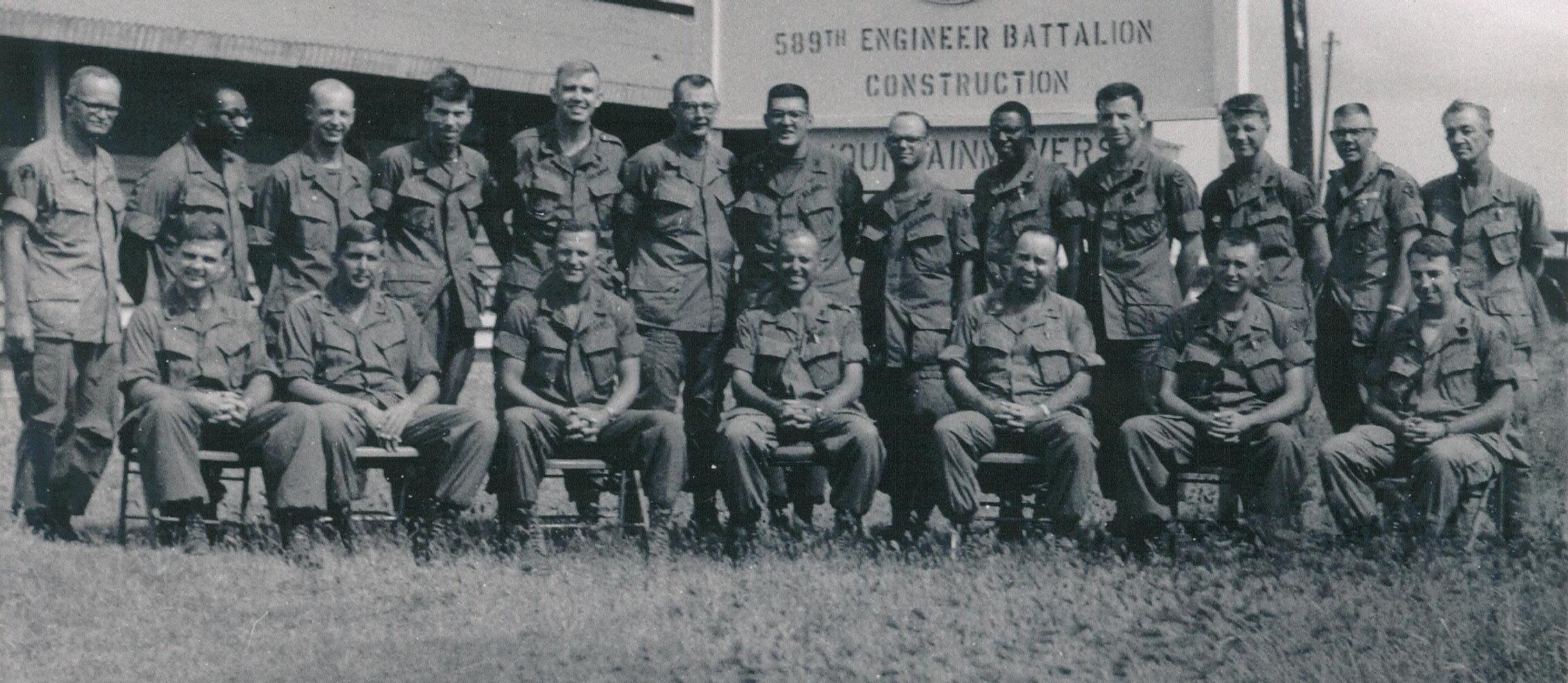
in,” Darwin said. “It’s perfect.”
For the next 20 months, Darwin taught concrete to engineering personnel, from enlists to captains.
He learned how to teach through an instructor training course based on methods developed at West Point. “This is the Army method of teaching,” Darwin said. “It’s how to stand up in front of a group. It’s how to engage, it’s how to prepare your lesson plans. After a time, I thought, ‘I’d like to do this for a living.’”
So he resigned from active duty, though he stayed in the Reserves and eventually retired as a lieutenant colonel. As he finished his doctorate in civil engineering at the University of Illinois at Urbana-Champaign in 22 months, “which is on the fast side,” Darwin started looking for a job in the spring of his second year.
After looking at a couple of other universities, Darwin picked KU because it wasn’t in a big city, and he really liked the faculty.
At the time, Stan Rolfe worked in the field of fracture mechanics, but the civil engineering department was small and didn’t do much other research in structural engineering. Darwin is pleased that the department has added many more active researchers over the years, but in those early days, he had full run of the structure engineering lab. “It was all mine. A super-great lab, 4,000 square feet – and I had the whole thing to myself.”
So he went to work.
Though he was “pretty naïve” when he started out, he was always driven by curiosity and a need to branch out into new areas. With the support of the department and KU, he began building a research program. “If you’re building a research program, the challenge is to know what areas require study. You need to know important problems that need to be solved. And then you need to get the funding to support that research.”
At first Darwin worked dual tracks in concrete materials and reinforced concrete. Then he was approached by professors at K-State who wanted to do experimental work on composite beams — that is, beams with a concrete deck supported by steel girders. “That was not my area, but I said, sure, and

we started working.” Then, funded by the National Science Foundation (NSF), he began working on a study dealing with earthquake design, an area that had always interested him.
To investigate microscopic and submicroscopic behavior of materials under load, an area that started with his master’s work, Darwin secured funding from the NSF and the Air Force Office of Scientific Research (AFOSR). To do this research, they had to keep running over to the Higuchi Biosciences Center to use the “biologists’ scanning electron microscope (SEM).” So he obtained AFOSR funding to purchase a SEM for the Engineering School to dedicate to that study.
In the late 1980s, at the behest of Dean of Engineering Carl Locke, a chemical engineer, Darwin and colleague Steve McCabe began researching the corrosion of reinforcing steel. “Nobody in the Department of Chemical and Petroleum Engineering wanted to work on that!” Darwin laughed. The CEAE Corrosion Lab has been busy ever since. Over the years, Darwin has also overseen the Concrete Lab and many others.
“So I have many tracks to keep going,” he said. “We do lots of different things, and it’s been successful. It’s fun to do all this different research.”
So how does he keep up with all of it?
It’s not easy, Darwin admits. When he was

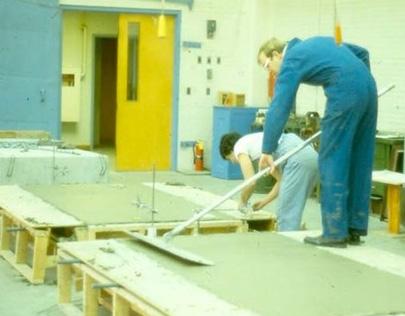
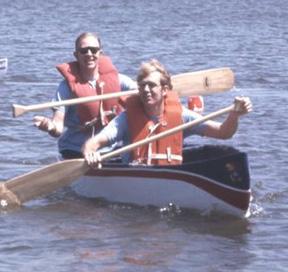
department chair, it was even harder. “I have to hand it to the other professors who work with me – my coprincipal investigators – because they really kept the projects on track.”
In the early 1990s, the Kansas Department of Transportation (KDOT) asked for his help to minimize cracking on steel-concrete composite bridge decks. Cracks in the concrete allow salt to trickle down and corrode the reinforcing steel, shortening the life of the bridge. KU and KDOT went in together on the research, and Darwin began evaluating the effects of design, concrete material selection and construction methods on cracking.
After finishing three studies over eight years, he and the state bridge engineer agreed, Darwin said. “We know what we need to do to minimize that cracking. What do you say we actually build some of these bridges?” And that’s just what they did!
This became one of their longest-running research projects, a two-phase pooled fund study totaling $2.5 million over 13 years, which involved 19 state departments of transportation and the Federal Highway Administration.
Darwin, his co-investigator JoAnn Browning and their graduate students worked in the lab on various aspects of concrete and corrosion, used test data from bridge projects to develop improved prediction models and put those methods to work in the field on the bridge decks as they were being constructed. Then they surveyed the results.
At the same time, they were doing a parallel project on minimizing concrete cracking, in general, to add to this pool of knowledge. And the studies have continued.
Projects to minimize cracking in bridge decks have been continuously funded from the early 1990s, and will be through at least the end of 2025.
Darwin appreciates the scope of work within civil engineering. Recently a student in mechanical engineering told him, “This is all the same kind of stuff that I learn in mechanical engineering, except we work on machine design where everything’s like this.” Darwin brought his hands together to
demonstrate. “But your stuff is so big!”
Darwin warmed to the topic. “If you step out of your house, and if it’s not moving or growing, it’s civil or environmental engineering. It’s the streets. It’s the water supply. It’s the sewers that take the waste away and it’s the treatment facilities that reclaim that water. It’s the bridges. It’s the planning of the roads and their geometry so the cars can stay on without flying off. It’s the foundations underneath the buildings and the bridges. That’s all part of civil engineering and it’s the people who construct it all.
“Then architectural engineering is everything inside the building: Heating, ventilation, air conditioning. It’s plumbing, power distribution, lighting, and fire protection. It’s acoustics – the sound inside of a concert hall. It’s amazing stuff, and it’s all part of our department.”
So, what’s the favorite part of Darwin’s work?
“Now that I’m going to get back to it, I think it’s probably equal parts teaching and research,” he said. “I enjoy it. I enjoy working with the students. I couldn’t be chair, keep doing my research and actively teach.”
But there’s an additional benefit to teaching.
“In today’s research university, you make your name based on the research, funding and products that you put out,” he said. “But professors have the closest thing to immortality because we affect people.
We teach our students, and they may not realize it, but they pick up all sorts of stuff and give it to the people they work with, and if some of them become professors they pass that on. So everything we do in a university and with our research students has an impact several generations farther down the line.”
Darwin has given lectures in Japan, Greece, England, France, Taiwan, Egypt and many other countries. In his office is an embroidery given to him when he lectured in Vietnam in 2011, returning to the country for the first time since the war. He lectured in China in 1986 and again in 2001, right after 9/11.
But the best crew he’s worked with is the department right here at home. He is decidedly optimistic about the future of the CEAE Department.
“Looking forward, I think the new department chair, Caroline Bennett, is doing a super job,” he said. “It’s just her personality and the way she operates. The potential for this department just keeps going up. We’re getting stronger and stronger. I’m proud of the increase in our research funding and the increase in the strength of our graduate program. This bodes well for the department and the university.
“KU’s faculty here has always felt like home.”
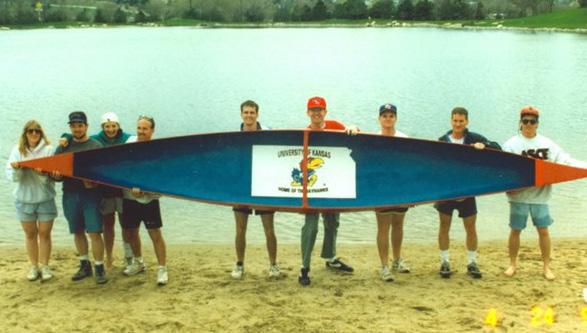

Through innumerable professional and service activities, Tom Mulinazzi has earned a reputation as the KU School of Engineering’s unofficial goodwill ambassador. Since arriving at KU in 1979 as a professor in the Department of Civil, Environmental & Architectural Engineering, Mulinazzi has a track record of unbroken service to the department, the engineering school, the university and the state of Kansas. One of his most prominent roles within the School of Engineering was associate dean of engineering — a title he held on a part-time basis from 1987 to 1990, then full-time from 1992 to 2001. As associate dean, he worked on the admission and dismissal of undergraduate students. Colleagues said he was always sympathetic, helpful and fair to students experiencing academic and personal issues. He spent extensive time and effort to help struggling

The J. A. Tiberti Family Lecture began in 2011 through a generous contribution from members of the Tiberti family to the KU Department of Civil, Environmental & Architectural Engineering. Topics focus on ethics, ingenuity, entrepreneurship and issues for the education, personal growth and professional development benefit of students.
engineering students successfully complete their degrees. He also took a serious and steadfast approach to certify each student’s graduation status. Several years after his retirement, he continued to volunteer his time and expertise to advise students in the department
Among KU Engineering faculty, Mulinazzi has a decades-long track record as one of the school’s greatest recruiters. He was always happy to meet with prospective students, often accompanied by their parents. During those visits, he would get acquainted with the student and provide guidance well-suited to their talents and interests. Mulinazzi relished opportunities to interact with Kansans. He traveled across Kansas to make presentations to local residents in 68 counties and more than 85 municipalities. He frequently discussed the importance of appropriate, clear and easily understood traffic signage, critical for highway safety. His dedication insured signage met legal standards and helped the public travel safely.
Anthony (Tony) Thompson is the chairman/ CEO of Kwame Building Group, Inc. (KWAME), the first African American ESOP corporation in the state of Missouri, which he founded in 1991. Headquartered in St. Louis, MO, KWAME is a construction management/program management firm that serves as an independent agent to the client/owner. KWAME provides, along with other services, exceptional project management, scheduling, estimating, contract/claims administration and document controls.
The KU CEAE Academy, founded in 2011, honors our department’s most distinguished alumni and former faculty. Members are chosen by the CEAE Advisory Board in recognition of their outstanding professional achievements, high ethical standards, advocacy and support for KU CEAE. We are happy to announce the election of two new members to the CEAE Academy.
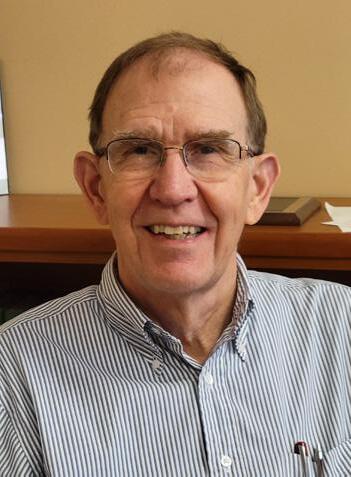
B.S. Civil Engineering
M.S. Structural Engineering
Ph.D. Civil Engineering
David Darwin, Deane E. Ackers
Distinguished Professor, joined KU in 1974 and, at the time of his election, had been serving for 49 years, including 10 years as department chair. Darwin is a leader in structural engineering and materials research with emphasis on all things concrete and played a major role in upgrading the laboratories across the department. Darwin is a pastpresident and honorary member of the American Concrete Institute, a fellow of the Structural Engineering Institute and the American Association for the Advancement of Science, and a distinguished member of the American Society of Civil Engineers.

B.A. Environmental Design
B.S. Architectural Engineering
M.B.A. Finance
M.S. Civil Engineeirng/ Construction Management
Chairman/CEO - Kwame Building Group, Inc
Anthony (Tony) Thompson is the chairman/CEO of Kwame Building Group, Inc. (KWAME), the first African American ESOP corporation in the state of Missouri, which he founded in 1991. Headquartered in St. Louis, MO, KWAME is a construction management/program management firm that serves as an independent agent to the client/owner. KWAME provides, along with other services, exceptional project management, scheduling, estimating, contract/claims administration and document controls.
Four faculty members have been named as CEAE Chair’s Council Professors. Pictured below, from left: Masoud Darabi, Roy J. Leonard Chair’s Council Associate Professor; Brian Lines, David A. Ross Chair’s Council Associate Professor; Justin Hutchison, Ernest C. Pogge Chair’s Council Assistant Professor; and Alexandra Kondyli, Thomas E. Mulinazzi Chair’s Council Associate Professor.

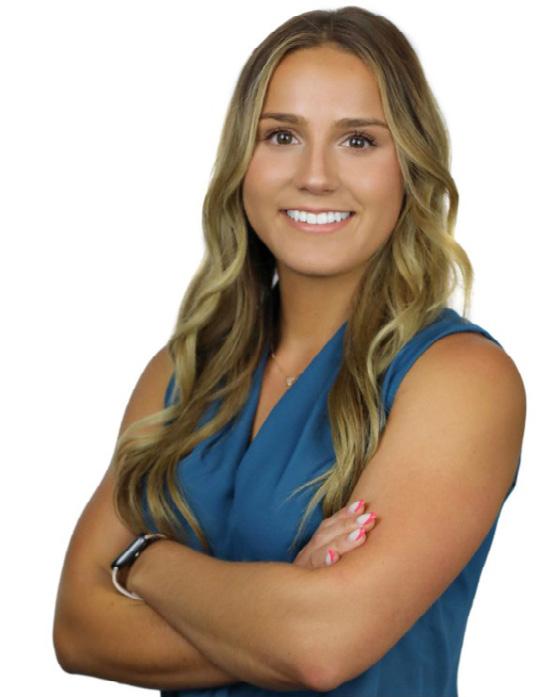
By Melinda R. Cordell
indsay Withers’ dedication to her classes and studies allowed her to maintain a 4.0 GPA throughout college. Because of her academic dedication, her curiosity about the engineering world and straight-up hard work, she was nominated for the 2023 Sammie and Carl Locke Award for Outstanding Seniors.
During her time as a KU Engineering student, Withers made valuable connections with faculty.
“The professors are awesome,” she said. “I got to know many of them well, mainly because I went to their office hours and formed relationships with them. Through these relationships they were willing to write me reference letters for my next steps in life.”
She was an active member in two clubs. One was ASHRAE, a club related to HVAC. She won a $10,000 Willis H. Carrier scholarship through them, which helped immensely to lessen her financial burden.
She also participated a great deal in the KU Chapter of the Illuminating Engineering Society, where she was president from 2022-2023.
Withers began her freshman year with an interest in aerospace and chemical engineering, trying to decide which of these disciplines she preferred. By the end of the year, she wasn’t sure that she wanted to continue with either of them.
Her friends changed all that.
She explained that when you’re a freshman, you generally end up with a group of fellow students from other disciplines who are attending the same general education courses with you. “I had some friends who were in architectural engineering, and I found what they did in class interesting. All engineering disciplines have an introductory course that students take their freshman year. I looked at what they had in their coursework, and I liked it better than the introductory courses of aerospace and chemical engineering. At the beginning of my sophomore year, I switched to architectural engineering.”
Design in general interested her, but she soon discovered that she was most captivated by how a building was designed. Architecture was concerned about the building facade and the room layout, but architectural engineering was more about the systems within the building. What structure do you need to specify to hold the whole thing up? How do you fit the ductwork, lighting and plumbing into the plan?
“It’s basically like putting together a puzzle,” Withers said. “I always liked that type of problemsolving, one that challenges your mind.” That aspect engaged her most of all.
To maintain her 4.0 GPA, she worked hard and spent a lot of time on the material. “I spent hours rewriting notes because writing helps my memory,” she said. “I’d also make quizlets of the material and go to a lot of office hours, because if I was unsure, it
was just easiest to ask the professor for clarity.
“It was important to me to know the material for an active career, not just for a test.”
During her freshman year, she’d been active in a number of clubs and busy with other activities. But, when the pandemic hit and everybody was locked down, things quickly changed. During COVID-19, it was difficult to be involved in clubs. Virtual meetings were nowhere near as fun as getting to meet in person.
In addition, when classes were canceled and everything went virtual, being back home meant she was working on her family’s farm and ranch. This did not leave much time for extracurricular involvement. She did, however, remain very involved with her studies and stayed in communication with the professors.
“After COVID, things took a while to pick back up in comparison to my freshman year,” she said. Her club activities and attendance slowed until gradually, life came back to the “new normal.”
Once in-person classes resumed, Withers enjoyed the hands-on work her engineering courses provided. Many classes required a final design project, which provided a realistic design experience.
In lighting class, her project was to redesign the lighting in the architectural engineering (ARCE) senior lab. Withers took lighting measurements with handheld instruments, then loaded the data into a computer program to determine insufficiencies of the lighting system and find out which required upgrades she needed to meet code.
Her submitted project showed a new unique design and its supporting data. Her project was so well-done that her professor asked to use it as a future class example, and he shared it with a local lighting manufacturer as a working design solution for the ARCE senior lab. Withers hopes to see her design’s implementation someday.
She also enjoyed the design experiences in her structural courses. The final project in her steel design course was to design the steel framework for Lippincott Hall, as it stands today on Jayhawk Boulevard. This project was done via hand calculations and on the computer. Through it, she gained a thorough understanding of how to design a steel structure based on loading conditions and the
local codes.
Finally, Withers’ reinforced concrete course also included a design project. She especially enjoyed its very hands-on aspect. Her group designed their own concrete mix, built the formwork, poured the concrete and later tested the product to find out if the mix design was accurate.
Withers was in the KU Honors program. In order to graduate with honors, she took 18 credit hours of honors coursework and completed four Enhanced Learning Experiences (ELEs): Breadth of Learning, Leadership, Professional Development and Public Service Enhancement.
Breadth of Learning was fulfilled by taking coursework outside of her major. Leadership was fulfilled by serving as a leader in a campus organization. Professional Development was fulfilled by completing a 40-hour internship; she completed that requirement three times over. Finally, Public Service was fulfilled by accumulating at least 45 hours of public service.
Her internships covered three different areas: mechanical, electrical and structural. After her sophomore year, she completed the mechanical internship at Henderson Engineers in Lenexa, Kansas. Here, she drafted HVAC and plumbing systems, sized ductwork, determined loads on HVAC equipment and sized rooftop units (RTUs).
Her second internship was as an electrical intern at George Butler & Associates (GBA) in Lenexa. She drafted one-line diagrams and site plans, sized electrical wiring, reviewed electrical equipment submittals and conducted code reviews.
Her most recent internship was as a structural intern at Burns & McDonnell in Kansas City, Missouri. This work involved reviewing shop drawings, modeling and loading analysis of new construction, formulating calculation packages and designing a steel structure.
Her varied experiences through the internships give her a comprehensive understanding of how building systems fit together. She also made lifelong connections along the way.
During her senior year, she added a brand-
new track. Along with her extracurricular volunteer work, she was job shadowing at a local veterinary clinic.
How did she come to move from architectural engineering to the veterinary profession?
“I think part of it is that I like putting things together,” Withers said. “That’s what you might do in a surgery, such as putting a bone back together. I observed many different surgeries at the clinic, and I can’t help but see parallels to engineering of problem solving.” With this in the back of her mind, she pursued veterinary work because it was another passion of hers.
Withers’ familiarity with animals stretches back to her childhood on a cattle ranch south of Dodge City - “way out there,” she says. “That’s where I’m from.” On the ranch, they raise Angus cattle and crossbreed with Hereford bulls.
Naturally, living on a ranch meant helping with the animals. Withers enjoyed being involved in the animal health and nutrition of the herd. The heifers or cows would be artificially inseminatedto produce early spring calves, and the veterinarian would come out about 60 days after breeding to “preg check” them. “I’d help move the cattle down the chute, then stand behind the vet and help wherever I could. It was a part of my childhood that I always liked.”
When a herd of cattle needed to be moved into a new pasture, she and her father would drive four-wheelers to move them from the old pasture to the new one. While herding the animals in this way, she and her father would look for sick cattle. These would be taken back to the pens where they’d get rest and medication.
Withers assisted with vaccinations, which she was allowed to do under their BQA (Beef Quality Assurance) certified ranch manager. The BQA program and certifications added quality and safety measures to their calf production.
When a mama cow was having trouble giving birth, Withers would help pull the calf – that is, she would help the mama cow deliver it. If the calf was breech, or stuck in the birth canal, pulling a calf could be a long and arduous job, but a necessary one that could save the life of the mama cow and the calf.
That’s why Withers plans to follow her architectural engineering diploma with courses on the Ecology, Evolution and Organismal Biology track. As one can expect, her engineering curriculum did not satisfy all the veterinary school prerequisite coursework, so she’s working on the remaining prerequisites now.
“I enjoy engineering, math and sciences, so that’s why I was in architectural engineering,” she said. “But through my internships, which I also enjoyed, I compared them to experiences I’ve had in the animal veterinary world. Both provided different types of fulfillments, but I found myself drawn to the veterinary track. That’s how I made my decision on where I want my path to go upon graduation.”
Withers will be staying around at KU to pick up her required biology and organic chemistry classes. “There are quite a few undergraduate courses that I need to complete, and by the end of next summer I’ll have them completed. I’ll also continue to gain veterinary experience at the same clinic where I have been shadowing. The hands-on experience will continue to increase my knowledge of animal health and nutrition for large and small animal care.
“All in all, I’m grateful for the opportunities and friendships that I’ve made at KU the last four years.”





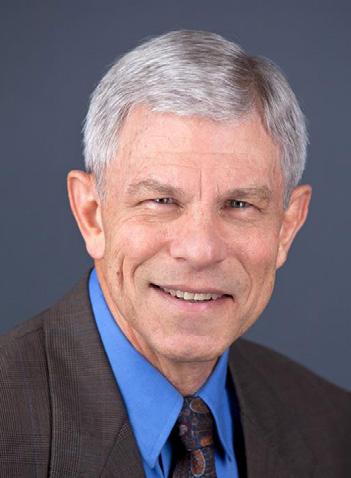
A very generous KU alum recently established the Prof. Stephen Randtke Environmental Engineering & Science Student (EE&S) Support Fund. This is an endowed fund, managed by the KU Endowment Association (KUEA), that will provide direct financial support to students studying EE&S at KU, both graduate students and senior undergraduates who have demonstrated interest in environmental engineering. Support may include, but is not limited to, scholarships, awards, fellowships, travel expenses and research assistantships. Expenditures will be based on faculty recommendations, with department approval, and the faculty may consider both need and merit, as well as co-benefits to the program.
The initial donor, who wishes to remain

Professor Stanley Rolfe was an esteemed member of the engineering community and a dedicated professor at the University of Kansas for more than four decades. He passed away on January 23, 2023, in Valley, Nebraska.
In his memory, a named endowed graduate scholarship was established to be awarded to civil engineering students at KU. This scholarship will provide aspiring civil engineers with invaluable scholarship support and inspire them to carry forward Rolfe’s legacy.
“It has been a privilege to call Stan a friend and a colleague for over 50 years,” said John Barsom, a consultant and the former chief of the materials behavior division at U.S. Steel Corp. “He will be remembered as a dedicated teacher and mentor, an
anonymous, hopes others will contribute to this fund so that it will grow much larger over time and support EE&S students for many years to come. The fund was publicly announced in February, 2023 in conjunction with KU’s annual One Day One KU fundraising event, with Scott Freeman (B.A., Envir. Studies, 1976; B.S., C&PE Chem. E., 1979) and Steve Randtke serving as “ambassadors” for the fund.
Nearly $5,000 in donations were received that day, and each donation was matched by Freeman. Donations to this fund are welcome anytime and can be made online at https://kuendowment. org/. Select “ways to give,” then “online,” and then designate on the form, under “other purpose,” the “Prof. Randtke EE&S Student Support Fund.” Those who prefer another means of giving may contact Austin Ice at AIce@KUEndowment.org or (785) 832-7375.
excellent engineer, and, above all, a good and honest man. His contribution to fracture mechanics helped transform the field. He will be greatly missed.”
Rolfe’s legacy is one of commitment and contribution. From his early days at U.S. Steel to the passion and knowledge he shared in the classroom, his contributions have been instrumental in reshaping the landscape of the field. His willingness to lend his expertise to industry boards and associations underscores the commitment he had to elevate the standards and enhance the profession. Rolfe remains a source of inspiration for generations to come, embodying the principles of design, mentorship and unyielding integrity. If you are interested in learning more about the scholarship and how you can support it, visit https:// kuendowment.org.

Large earthquakes struck southcentral Türkiye and Syria in early February of 2023 that caused widespread damage to buildings. Ultimately, nearly 60,000 people died, millions were displaced, and economic losses exceeded a tenth of the gross domestic product of the Turkish economy.
Rémy Lequesne traveled to Türkiye in late March 2023 as part of an international team led by the American Concrete Institute Disaster Reconnaissance Committee (ACI 133). The team’s purpose was to learn about what engineering choices contributed to the disaster, and to make recommendations that could save lives and reduce disruptions in future earthquakes. For over two weeks, Lequesne and the team surveyed hundreds of buildings in ten cities, taking time to document things like floor plan layout, column and wall dimensions and the condition of structural and nonstructural elements.
It became clear that buildings with more walls – stiffer buildings – had less damage. Stiffer
buildings were less sensitive to poor construction details, less likely to collapse when the shaking intensity was high and more likely to still be inhabited after the earthquake. This observation –and the recommendation that engineers be required to use more walls in new mid-rise structures – has been published in a journal paper and presented at conferences. Lequesne has also shared his field observations with students in undergraduate and graduate courses at KU.
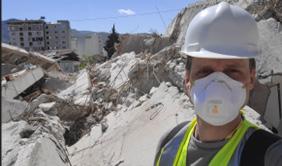
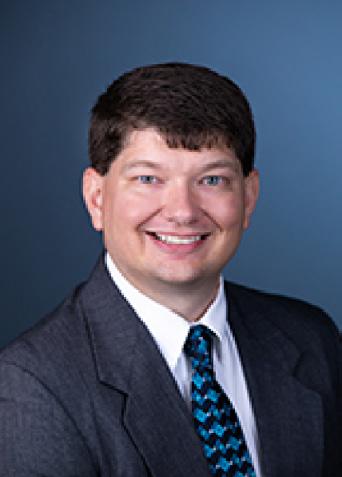
Justin Hutchison, assistant professor of civil, environmental & architectural engineering, received a five-year, $560,000 grant from the National Science Foundation (NSF) for his research into microbes that can break up chemicals in soil and groundwater. His research, titled “CAREER: Thermal Proteome Profiling Applications for In-Situ Bioreporting of Contaminant Degradation in Soil,”
focuses on microorganisms that can break down emerging contaminants. While current research methods rely on culturing microorganisms - and only 5% of such microorganisms in a soil sample can even be cultured - Hutchison is working to broaden the field by examining the proteins of all such microorganisms directly, in the soil itself. The issue is immense. According to the American Water Works Association, threats to drinking water posed by emerging contaminants could prompt $370 billion in system upgrades - all
to treat pollutants that include some so toxic that the EPA issues health advisories for concentrations as low as 0.004 parts per trillion.
Hutchison wants to address this growing threat. By using the same approach used to advance disease-targeting abilities of pharmaceuticals, he aims to identify enzymes that can degrade such chemical pollutants into harmless byproducts.
“This grant is acknowledgement that biological processes play a vital role in protecting our drinking water supply and that alternatives to our current research methods are needed to advance
research in this area,” said Hutchison. “It will play an important role in training the next generation of undergaduate and graduate students to advanced sustainable solutions to protect and treat our drinking water.”
CAREER awards are considered among the NSF’s most prestigious, given to about 500 early-career faculty each year with the potential to serve as academic role models in both research and education. NSF expects recipients’ activities to build a firm foundation for a lifetime of leadership in integrating education and research.
For the last decade, William Collins has taken any student interested in learning more about steel construction to celebrate the American Institute of Steel Construction (AISC) Steel Day. For the past three years Collins has partnered with the Ironworkers Local 10 and The Builders AGC to bring students to the ironworkers training center in Kansas City, Missouri where they get firsthand training from indistry experts on steel rigging, welding, bolting and column climbing.

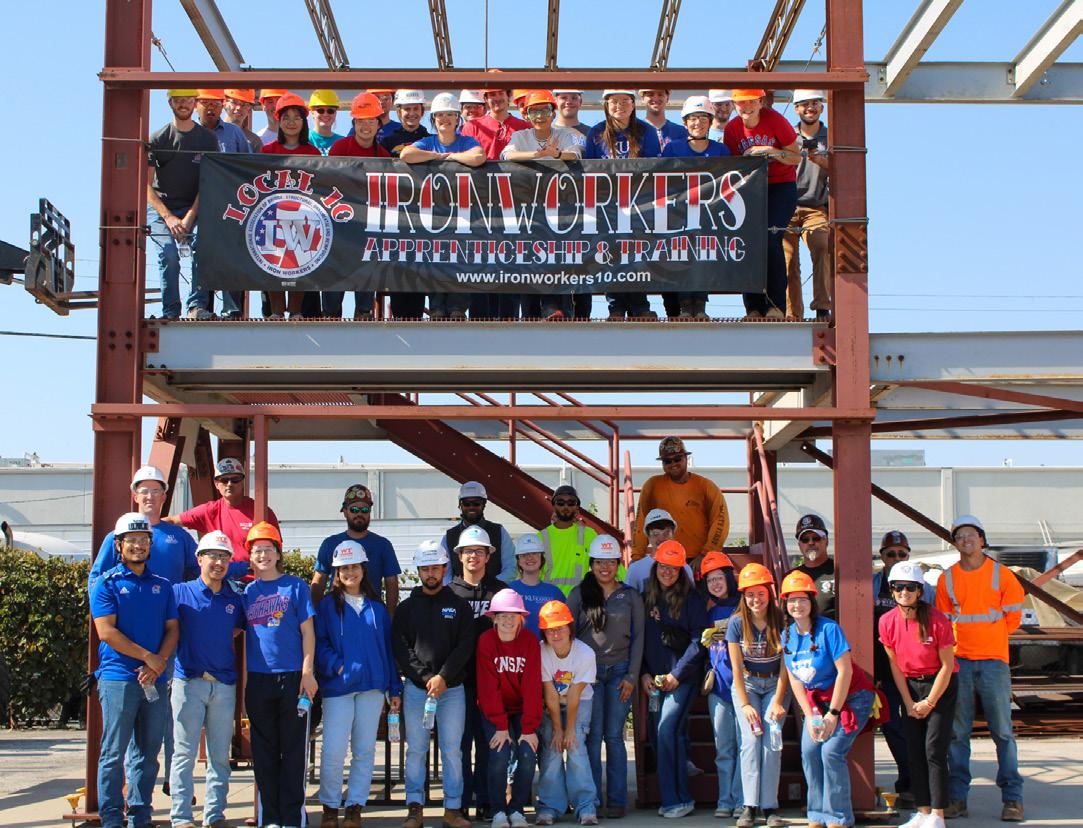

The Civil, Environmental & Architectural Engineering Department within the School of Engineering offers five conferences over the year. The Asphalt Paving Conference and Geotechnical Engineering Conference are held in the fall semester and the Environmental Engineering Conference and Structural Engineering Conference are held in the spring semester. The Construction Safety Conference is organized by the National Center for Construction Safety and is held in the summer.
Each conference offers the opportunity for industry leaders to showcase their business, learn about new trends in the engineering fields and networking for engineers across the country. If you are interested in learning more about the conferences or would like to learn more about becoming a sponsor or exhibitor for one or more of our conferences, please contact Emma Herrman, outreach & communications coordinator, at emma.herrman@ku.edu or visit our website at ceae.ku.edu/ceae-conferences.
56th Annual Geotechnical Engineering Conference
